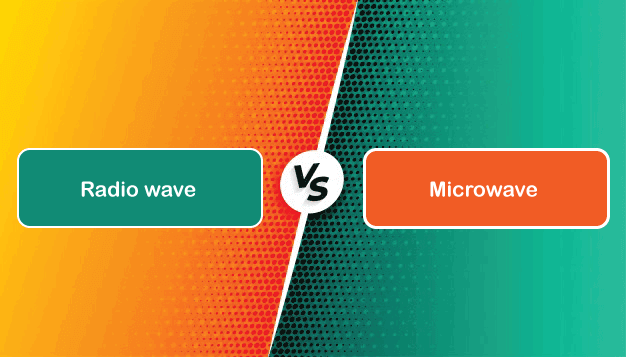Key Differences between the Radio Waves and Microwaves

Radio waves and microwaves are both forms of electromagnetic radiation, but they differ in several key aspects. Here are the key differences between radio waves and microwaves:
-
Wavelength and Frequency:
- Radio Waves: Radio waves have longer wavelengths, typically ranging from about 1 millimeter to 100 kilometers. They correspond to frequencies from approximately 3 kilohertz (kHz) to 300 gigahertz (GHz).
- Microwaves: Microwaves have shorter wavelengths compared to radio waves, ranging from about 1 millimeter to 1 meter. They correspond to higher frequencies, typically from approximately 300 megahertz (MHz) to 300 gigahertz (GHz).
-
Propagation Characteristics:
- Radio Waves: Radio waves tend to propagate over long distances with relatively little attenuation (loss of strength). They can penetrate buildings, foliage, and some obstacles, making them suitable for long-range communication.
- Microwaves: Microwaves exhibit a shorter range of propagation compared to radio waves. They are more prone to attenuation, especially when encountering obstacles such as buildings or foliage. However, microwaves can be focused into narrow beams for point-to-point communication over shorter distances.
-
Applications:
- Radio Waves: Radio waves are commonly used for long-distance communication, including AM (amplitude modulation) and FM (frequency modulation) radio broadcasting, shortwave radio, citizen's band (CB) radio, and television broadcasting.
- Microwaves: Microwaves are used in various applications, including wireless communication systems such as cellular networks, satellite communication, Wi-Fi (wireless local area networks), and microwave point-to-point links. They are also used in radar systems, microwave ovens for cooking, medical imaging (such as MRI), and industrial heating processes.
-
Heating Effect:
- Radio Waves: Radio waves generally do not produce significant heating effects when absorbed by materials. They are typically used for communication purposes and do not generate enough energy to cause substantial heating.
- Microwaves: Microwaves have a heating effect when absorbed by materials that contain water molecules, such as food. In microwave ovens, microwaves cause water molecules to vibrate, generating heat through friction, which cooks the food.
-
Frequency Bands:
- Radio Waves: Radio waves are divided into different frequency bands, including AM radio, FM radio, shortwave radio, VHF (Very High Frequency), and UHF (Ultra High Frequency), among others.
- Microwaves: Microwaves occupy a portion of the electromagnetic spectrum between radio waves and infrared radiation. They are divided into several frequency bands, including S-band, C-band, X-band, Ku-band, and Ka-band, depending on their specific applications.
In summary, while both radio waves and microwaves are forms of electromagnetic radiation, they differ in terms of wavelength, frequency, propagation characteristics, applications, heating effects, and frequency bands. These differences determine their suitability for various communication, broadcasting, and industrial applications.
Thank you,
